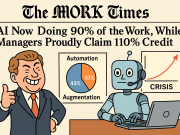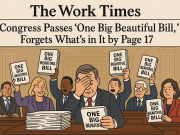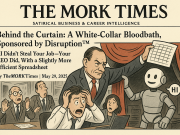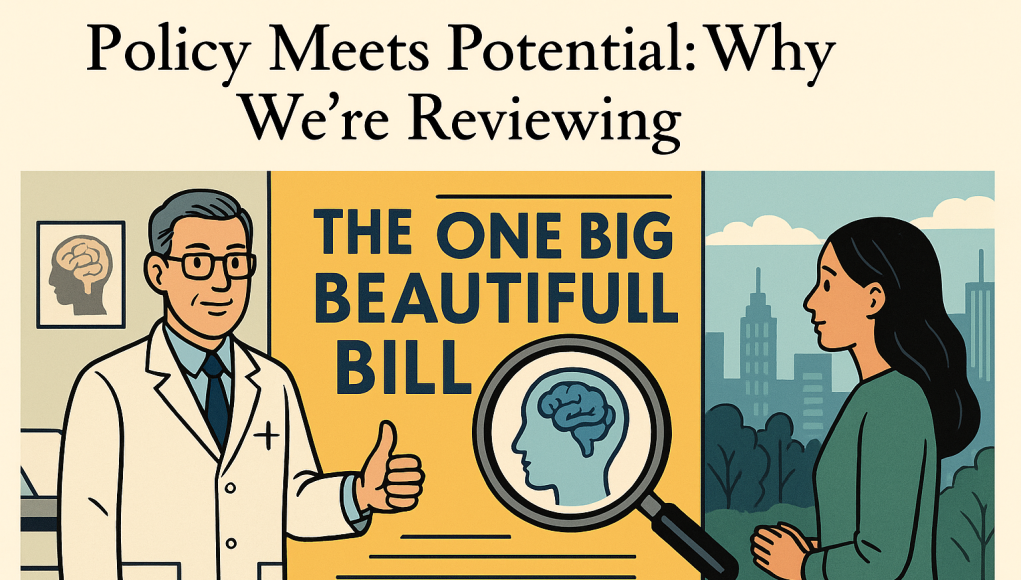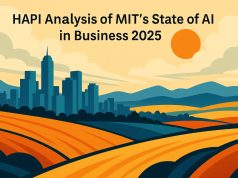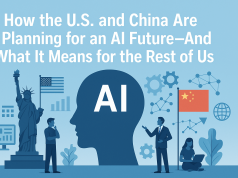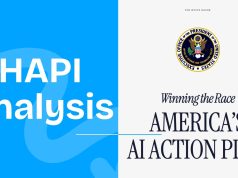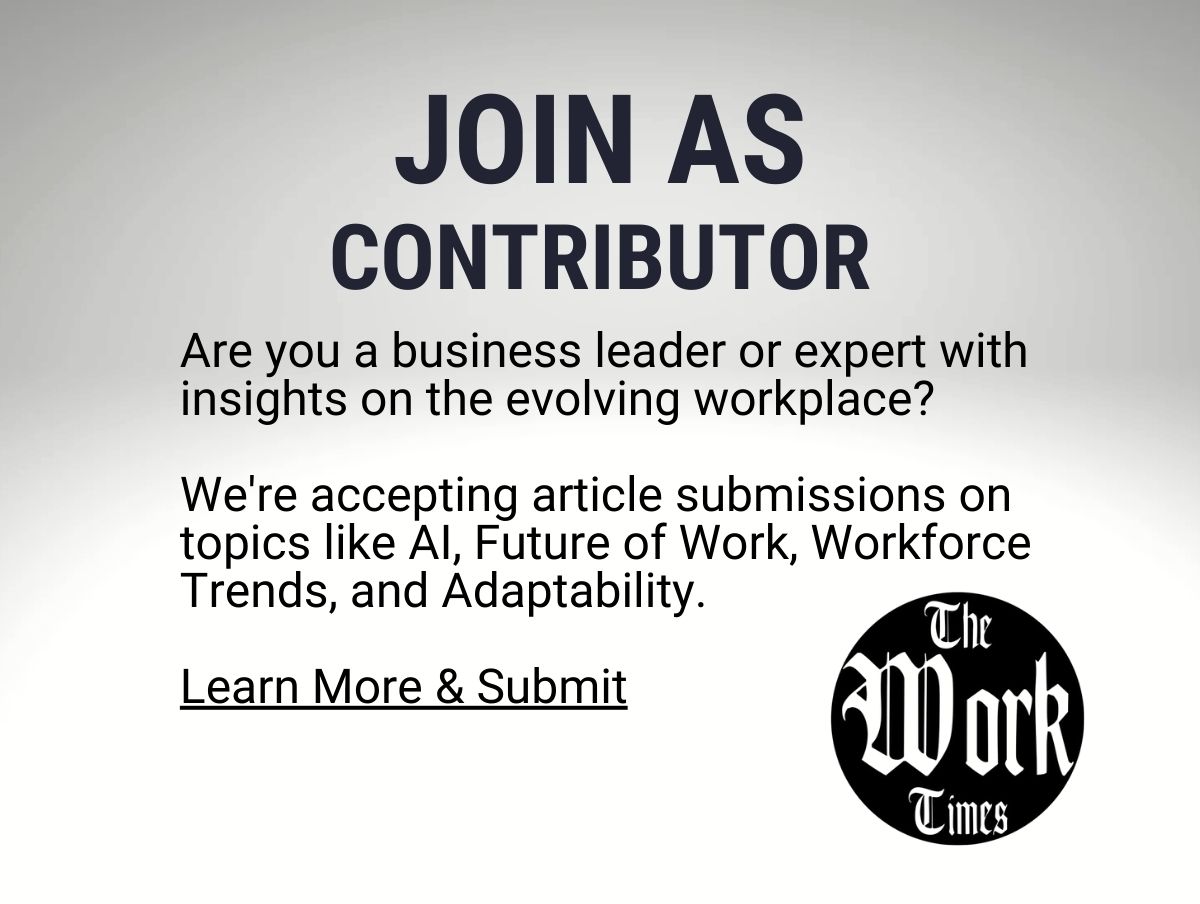Imagine walking into a doctor’s office for your annual check-up. But instead of checking your blood pressure, asking about your sleep, or reviewing your habits, the doctor just steps back, gives you a thumbs-up based on your wardrobe, and says, “Looking good. Keep it up.”
That’s how we often evaluate policy.
We look at its aesthetics—cost, scope, who it benefits in the short term—but rarely ask the deeper, more dynamic question: Does this policy help people become more adaptable, resilient, and future-ready?
That’s where the Human Adaptability and Potential Index (HAPI) enters the frame.
🧠 What Is HAPI?
HAPI is a nonpartisan framework designed to evaluate how well a person or system can adapt to change. Built on research in cognitive science, behavioral economics, and workforce strategy, it breaks adaptability into five key dimensions:
- Cognitive Adaptability – How well we learn and think flexibly
- Emotional Adaptability – How we handle stress and uncertainty
- Behavioral Adaptability – How we adjust our actions and habits
- Social Adaptability – How we collaborate across differences
- Growth Potential – Our capacity and motivation to keep evolving
These are the very traits that make individuals not just survive—but thrive—in a world shaped by AI, climate volatility, remote work, and continuous disruption.
🎯 Why Use HAPI to Analyze This Bill?
Because while politics fuels debate, adaptability fuels progress.
Reviewing The One Big Beautiful Bill through HAPI allows us to look past headlines, slogans, and ideological heat. We’re not here to litigate left vs. right. We’re asking: Does this bill make Americans more adaptable, more secure in transition, more ready for the next chapter of work and life?
This analysis is grounded in human potential—not political affiliation. It’s about measuring whether policy enables a better workforce, more agile families, and resilient communities. No spin. Just substance.
🔍 What We Found
Over five upcoming entries, we’ll score and analyze the bill section by section—looking at:
- How it strengthens our ability to learn and solve new problems
- Whether it builds emotional scaffolding during times of stress
- If it makes behavioral pivots easier for workers and employers
- How well it fosters inclusive collaboration and trust
- And ultimately, whether it fuels long-term growth for individuals and communities
Each part is scored out of 100, based on its alignment with modern, science-based measures of adaptability. Our goal? Not to decide if the bill is “good” or “bad”—but whether it’s adaptive.
🚀 Let’s Shift the Conversation
This isn’t just a review of legislation. It’s a reframing of what good policy even looks like in the 21st century. Because the measure of a bill shouldn’t be how loud it argues—but how well it prepares us for change.
Let’s begin. First up: Cognitive Adaptability—the mind’s ability to stay agile when the world won’t sit still.
Ready?
Part 1: Thinking on the Fly – The Bill, The Brain, and the Battle for Cognitive Adaptability
Score: 13/15 – Very Strong Support
Once upon a time, a fox and a hedgehog crossed paths at the edge of a wildfire. The fox, fast and clever, zigzagged through escape paths, improvising its way to safety. The hedgehog? It did what it always did—rolled into a ball and hoped for the best.
One lived. One did not.
In today’s workforce wildfire—fueled by AI, automation, and uncertainty—The One Big Beautiful Bill does a decent job building more foxes than hedgehogs. Let’s dig into how.
🧠 What Is Cognitive Adaptability Anyway?
Cognitive adaptability is your brain’s “change muscle.” It’s how you learn new tools fast, solve problems you’ve never seen before, and pivot when the game changes mid-play. It’s not about being the smartest person in the room—it’s about being the quickest to rewrite the rulebook when the old one stops working.
In HAPI terms, it means:
- How fast you learn
- How flexibly you think
- How well you solve novel problems
So, how does the bill flex this brain muscle?
💡 The Provisions that Boost Cognitive Brawn
1. Education That Evolves with You
The bill makes 529 accounts more versatile, now covering nontraditional learning like professional credentialing and homeschooling tools. This isn’t just for the college-bound—it’s for anyone pivoting to a new career or adapting to the next tech wave.
It’s like giving the fox a map to multiple exits—not just one.
2. Tax-Free Forgiveness for Student Loans
Debt can paralyze your decision-making. When every career shift might add $10K in tax liability, you’re less likely to risk the move. Making forgiven student loans tax-free, especially due to death or disability, gives peace of mind that won’t freeze learning in place.
3. Support for Low-Wage Learning Paths
“No tax on tips” and “overtime deductions” mean service workers have more in-pocket income. That can translate to online courses, side hustles, or certifications—on-the-job adaptability in action.
⚖️ What’s Missing?
Despite these positives, the bill doesn’t directly incentivize learning in strategic future domains like AI, data, or renewable energy. It’s a bit like giving the fox a great running shoe, but forgetting to tell it where the fire is spreading next.
Also absent: any cognitive training or frameworks to help adults learn how to learn, which research shows is crucial in rapidly changing jobs.
🧠 Final Verdict: 13/15
The Good:
- Tax policy aligned with learning access
- Reduces cognitive strain through simplification
- Supports both traditional and unconventional educational paths
The Gaps:
- No targeting of high-disruption skill areas
- Misses on teaching people how to adapt mentally, not just funding it
Part 2: Weathering the Storm – How The One Big Beautiful Bill Supports Emotional Adaptability
Score: 12/15 – Solid Emotional Support with Some Blind Spots
In Japanese culture, there’s a word—gaman—that roughly translates to “enduring the seemingly unbearable with patience and dignity.” It’s the quiet superpower of resilience. It’s also at the heart of emotional adaptability.
When we talk about workers thriving in uncertainty, we often think of tech skills or sharp minds. But history tells us it’s emotional ballast that truly steadies the ship. Think of the Apollo 13 crew. They weren’t the most technically advanced astronauts—they were the calmest when the oxygen tank exploded.
In our modern economy, where the shocks come not from outer space but from inflation, automation, or office closures, emotional adaptability is what keeps the workforce afloat. So how does The One Big Beautiful Bill help build our collective gaman?
❤️ What Is Emotional Adaptability?
It’s the ability to regulate your emotional response to stress, adapt to setbacks, and remain engaged in uncertain terrain. In HAPI terms, this means:
- Resilience under pressure
- Regulation of emotions
- Sustained motivation
In simpler terms: how do you keep your cool, your focus, and your spirit when everything goes sideways?
🧘 Provisions That Soothe and Strengthen
1. Paid Family Leave and Enhanced Childcare Credits
These aren’t just tax breaks—they’re lifelines. When a parent can care for a sick child without risking their job or when a low-income worker can afford daycare, emotional overload drops. Workers breathe easier, stress less, and perform better.
It’s hard to grow emotional resilience when your entire nervous system is in survival mode.
2. Healthcare That Moves with You
The bill expands HSAs and allows flexibility for things like fitness, on-site clinics, and even direct primary care. This isn’t just financial hygiene—it’s emotional hygiene. When health feels secure, the fight-or-flight response fades.
Imagine the difference between navigating job stress with versus without fear of medical bankruptcy.
3. Simplified Taxes, Predictable Benefits
In an era where IRS letters can trigger more dread than horror movies, simplifying deductions and locking in rules through 2028 brings something rare: predictability. That’s gold for emotional adaptability. Stability, even if subtle, frees up energy to deal with real change—not just bureaucratic curveballs.
💥 What’s Missing?
This bill excels at structural supports—but misses the emotional coaching. Where are the:
- Resilience training tax credits?
- Mental health benefits beyond traditional coverage?
- Incentives for stress-management tools, emotional intelligence development, or mindfulness programs?
We build the outer infrastructure for adaptation, but leave the inner game to chance. Emotional training remains the domain of TED Talks and HR newsletters—not national economic strategy.
❤️ Final Verdict: 12/15
The Good:
- Childcare and healthcare provisions directly lower stress
- Enables better emotional regulation through predictability
- Aligns policy with day-to-day emotional realities of workers
The Gaps:
- No strategic emphasis on emotional skill-building
- Mental health is structurally supported but not culturally championed
Part 3: New Tricks, New Tools – Behavioral Adaptability and The One Big Beautiful Bill
Score: 11/15 – Encourages Habit Change, But Misses the Psychology
In Charles Darwin’s On the Origin of Species, he never said the strongest survive. Instead, he observed that “it is not the strongest of the species that survives, nor the most intelligent… it is the one most adaptable to change.”
And in the jungle of the modern workplace—where yesterday’s software becomes tomorrow’s scrap code—behavioral adaptability is our survival instinct. It’s the lizard that drops its tail to escape. The barista who learned Instagram marketing. The accountant who picked up Python.
So what does The One Big Beautiful Bill do to help Americans shed old habits and adopt new, effective ones?
🔄 What Is Behavioral Adaptability?
It’s the ability to adjust your actions when the rules, tools, or expectations change. In HAPI terms:
- How quickly do you change behaviors or routines?
- Do you try new approaches when old ones stop working?
- Can you implement new habits effectively under pressure?
Behavioral adaptability is about doing, not just knowing. It’s turning knowledge into action, even if it’s uncomfortable.
🛠️ Provisions That Encourage Action Change
1. Deductions for Overtime and Tip Income (Secs. 110101–110102)
Rewarding frontline workers with deductions for extra hours or customer tips means more behavior is incentivized around extra effort and flexibility. These provisions say: adapt your work to demand, and the tax code will adapt with you.
2. Car Loan Interest Deduction for U.S.-Assembled Vehicles (Sec. 110104)
Behavior change often needs a nudge. By making U.S.-assembled cars more financially appealing, this clause influences consumer behavior toward domestic and likely more sustainable purchases—behavioral economics 101.
3. Support for Small Business Flexibility (Sec. 110105)
Small businesses get more generous tax credits for child care—especially when pooling resources. This encourages shared services, a new behavioral model for community-minded HR. It’s an incentive for employers to act differently, not just think differently.
🧩 But What’s Missing
These incentives are structural, not behavioral. They help people who are already ready to change—but don’t really help trigger the change itself. What’s absent:
- Tools for behavior tracking or feedback loops
- Support for habit formation (e.g., behavioral training or coaching)
- Organizational nudges (think: incentives to use new systems or adopt agile methods)
In essence, we give the fish a better boat—but we don’t teach it to paddle differently when the tide shifts.
🔄 Final Verdict: 11/15
The Good:
- Rewards behavior adaptation in work, parenting, and business
- Encourages flexibility through tax incentives
- Supports behavioral change in consumer choices (e.g., car purchasing)
The Gaps:
- No built-in nudges or coaching to help form new habits
- Behavioral science insights (feedback loops, habit stacking) are left untapped
Part 4: The Company You Keep – Social Adaptability and The One Big Beautiful Bill
Score: 10/15 – Lays Cultural Groundwork, But Stops Short of Collaboration Engineering
There’s a famous African proverb: “If you want to go fast, go alone. If you want to go far, go together.”
In the remote-work era, where Slack messages often replace watercooler chats and cross-functional teams span continents, the ability to “go together” is now less about location and more about adaptability. That’s what we mean by social adaptability—the capacity to shift communication style, collaborate across differences, and thrive in complex interpersonal environments.
It’s what makes you the glue in a group project instead of the gum stuck in the gears.
So, where does The One Big Beautiful Bill stand when it comes to enabling socially adaptable workers and communities?
🤝 What Is Social Adaptability?
Social adaptability is about thriving in team dynamics, embracing diverse perspectives, and adjusting your social toolkit to fit the room. In HAPI terms:
- Can you build rapport in a new group?
- Are you open to feedback and new viewpoints?
- Do you succeed in collaborative or cross-cultural contexts?
It’s empathy with direction. Kindness with flexibility. Teamwork in flux.
👥 Provisions That Empower the Socially Agile
1. Recognition of Tribal Governance in Adoption Credits (Sec. 110108)
This one’s subtle but profound. By expanding eligibility for special needs adoption credits to include Indian tribal governments, the bill affirms pluralism in family structure. That’s social adaptability at the systemic level—validating diverse ways of living and governing.
2. Education Contributions and Pooling Childcare Resources (Secs. 110109, 110105)
Whether it’s individuals contributing to scholarship funds or small businesses teaming up on childcare, the bill encourages shared responsibility models. These provisions signal a shift from “me” economics to “we” economics—exactly the kind of thinking adaptive social collaboration requires.
3. Simplified Communication with Clear Rules
A little abstract, but relevant: the clearer and more stable tax policy is (and this bill locks in a lot), the fewer conflicts and misunderstandings arise in social transactions—from employer tax filings to nonprofit operations. Less red tape = fewer social tripwires.
😐 What’s Missing?
We don’t see much that directly teaches or incentivizes cross-cultural collaboration, feedback literacy, or team dynamics.
Nothing addresses:
- Interpersonal training
- Conflict resolution frameworks
- Communication adaptability in hybrid work settings
The world’s most adaptable employees don’t just know things—they know people, and know how to flex across social landscapes. This bill provides foundations, but not field guides.
🤝 Final Verdict: 10/15
The Good:
- Encourages pluralism in policy design (tribal inclusion, diverse education models)
- Promotes resource-sharing behaviors across orgs and individuals
- Helps avoid social friction via policy clarity and predictability
The Gaps:
- Lacks investment in social skills training or cultural agility
- No support for the “soft” but crucial parts of team performance
Part 5: The Long Game – Growth Potential and The One Big Beautiful Bill
Score: 32/40 – A Resilient Foundation with Room for Rocket Fuel
If the four previous HAPI dimensions are like branches on a tree, then growth potential is the sun they stretch toward.
In nature, potential isn’t just latent energy—it’s direction. A seed doesn’t just exist; it wants to be a tree. Likewise, in the workplace, growth potential is your capacity and drive to take on more—bigger challenges, deeper mastery, new responsibilities.
The Romans called it virtus, the moral excellence and promise of a citizen to serve the state. Today, we call it leadership pipeline, upskilling, or career trajectory.
So does The One Big Beautiful Bill equip Americans not just to work—but to grow?
🌱 What Is Growth Potential?
In HAPI’s terms, this is a future-facing metric that answers:
- Are you improving over time?
- Are you driven to learn and take on more?
- Are there opportunities around you to grow?
It blends ambition, opportunity access, and upward mobility into a single measure of who will thrive tomorrow.
🚀 Provisions That Fuel the Clim
1. MAGA Accounts (Secs. 110115–110116)
Despite the branding, these accounts function as personal development investment vehicles. They’re akin to Roth IRAs or HSAs—but for general life resilience. Used well, they can fund training, relocation, or other career-boosting efforts.
That’s like giving a seed its own compost pile—growth on demand.
2. Tax Certainty Until 2028
Growth requires predictability. You don’t build a skyscraper on shifting sands. By locking in tax rates, deductions, and credits long-term, the bill creates psychological safety for long-term planning—whether you’re a worker, entrepreneur, or investor.
3. Layered Education Incentives (Secs. 110109–110111)
From scholarship credits to expanded 529 plans and ABLE enhancements, the bill provides lifelong learning scaffolds. These provisions don’t just support a single degree—they support an education ecosystem that grows with the worker.
4. Health Stability as Growth Enabler
Let’s not overlook this: someone who can manage health risks, care for family, and avoid bankruptcy from a broken wrist is more likely to take professional risks. Growth is emotional. Predictable health coverage supports risk-taking in career reinvention.
🔧 What’s Missing?
To grow, a worker also needs:
- Clarity on future-critical skill paths (think: AI, green jobs, data fluency)
- Acceleration mechanisms (e.g., tax-favored sabbaticals, training leave)
- Signals to employers that potential > pedigree
The bill incentivizes opportunity access, but doesn’t aggressively engineer accelerated growth. There’s no national mentorship initiative. No skill-mapping engine. No talent fast-tracking. It’s a field with good soil—but no irrigation system.
🌱 Final Verdict: 32/40
The Good:
- Provides financial platforms for career reinvention (MAGA, 529, ABLE)
- Creates the stability needed for long-range planning
- Encourages continuous learning in tax policy and employer design
The Gaps:
- Lacks focused investment in growth velocity (e.g., high-potential upskilling)
- Misses systemic frameworks to spot and fast-track emerging leaders
- No explicit prioritization of future-critical domains
Growth potential is a bet—on people, on ecosystems, on time. This bill makes a strong foundational wager. But to turn quiet potential into visible excellence, it needs to move from permissive to proactive.
The Quiet Revolution: Why Adaptability Must Be the New Standard in Policy
In ancient Rome, engineers who built bridges were required to stand under them as the scaffolding was removed. It wasn’t just a test of accountability—it was a declaration: you build for what must last.
When we build legislation, the stakes are no less critical. The world we face isn’t slowing down. It’s accelerating—technologically, environmentally, demographically. Change is no longer episodic; it’s ambient. In this landscape, adaptability isn’t a luxury—it’s a life system.
Our review of The One Big Beautiful Bill through the Human Adaptability and Potential Index (HAPI) offers one key insight:
Policy must do more than patch the present—it must prepare us for the unpredictable.
This bill, for all its scope and ambition, makes meaningful progress in several areas:
- It creates structural stability for families
- It incentivizes continuous learning and healthier lives
- It signals long-term investment in human capital
But it also reveals the next frontier: we need legislation that doesn’t just support where we are, but anticipates who we must become. That means embedding adaptability in everything—from education incentives to workforce transitions, from mental health scaffolding to AI-era skill building.
This isn’t a partisan issue. Adaptability is agnostic.
It cares little for ideology but everything for readiness.
As we move forward, let’s start evaluating every major bill not only by its cost or constituency—but by a new question:
Will this help our people—and our systems—grow stronger in motion?
Because in a world that won’t stop changing, the greatest power we can give our citizens is not just relief—but resilience. Not just benefits—but the ability to evolve.
That’s the true promise of good policy.
That’s the bridge we must all be willing to stand under.
Read What Experts Have to Say on Future of Work
For Tips and Suggestions Contact











